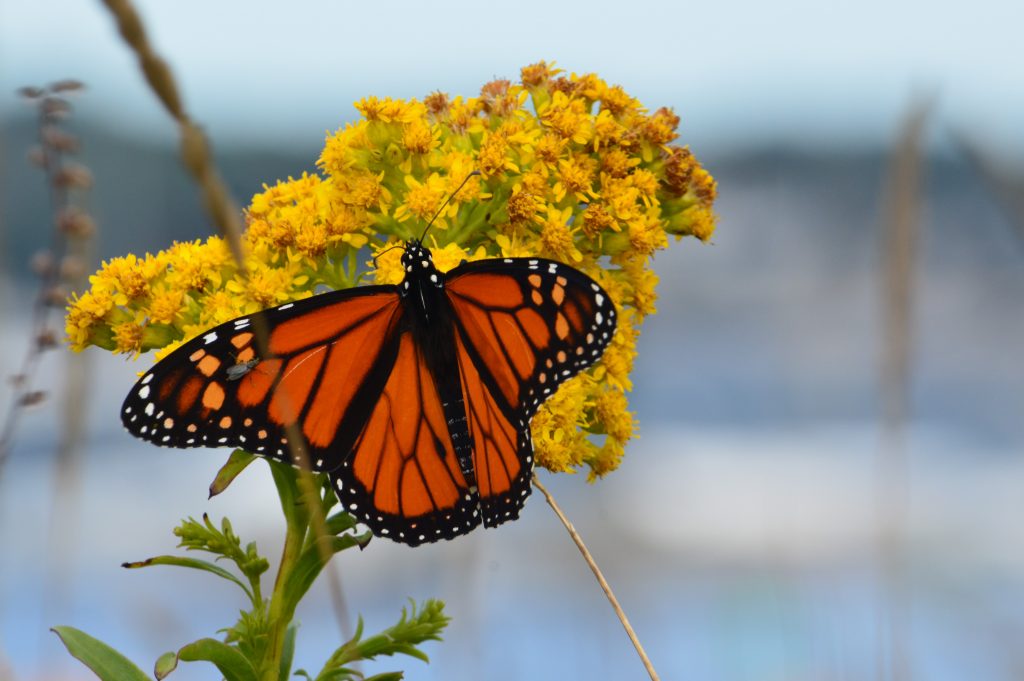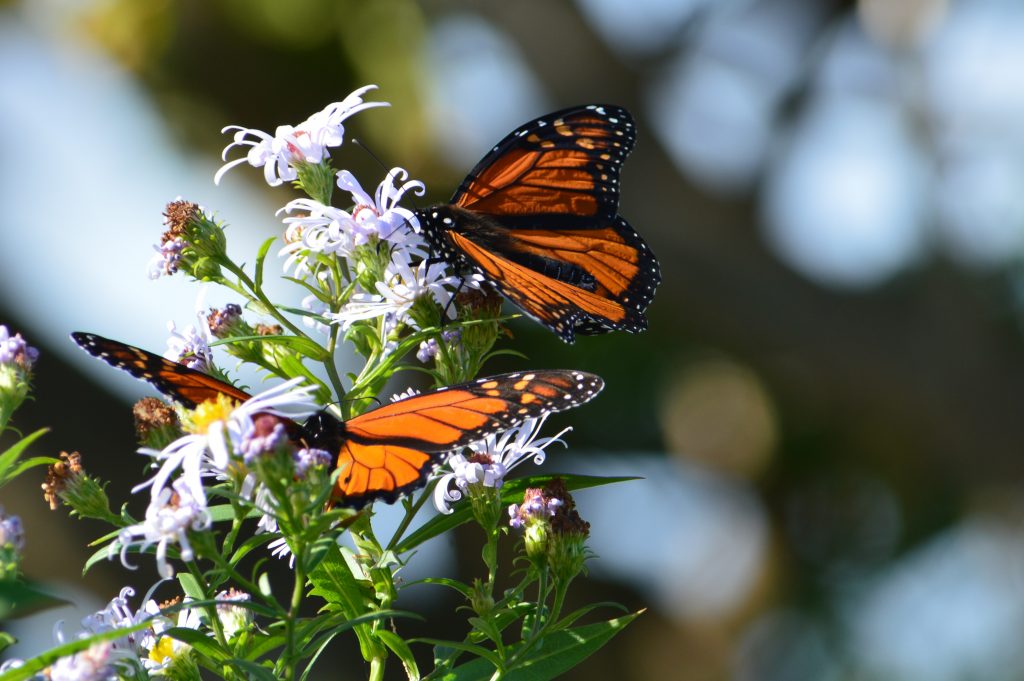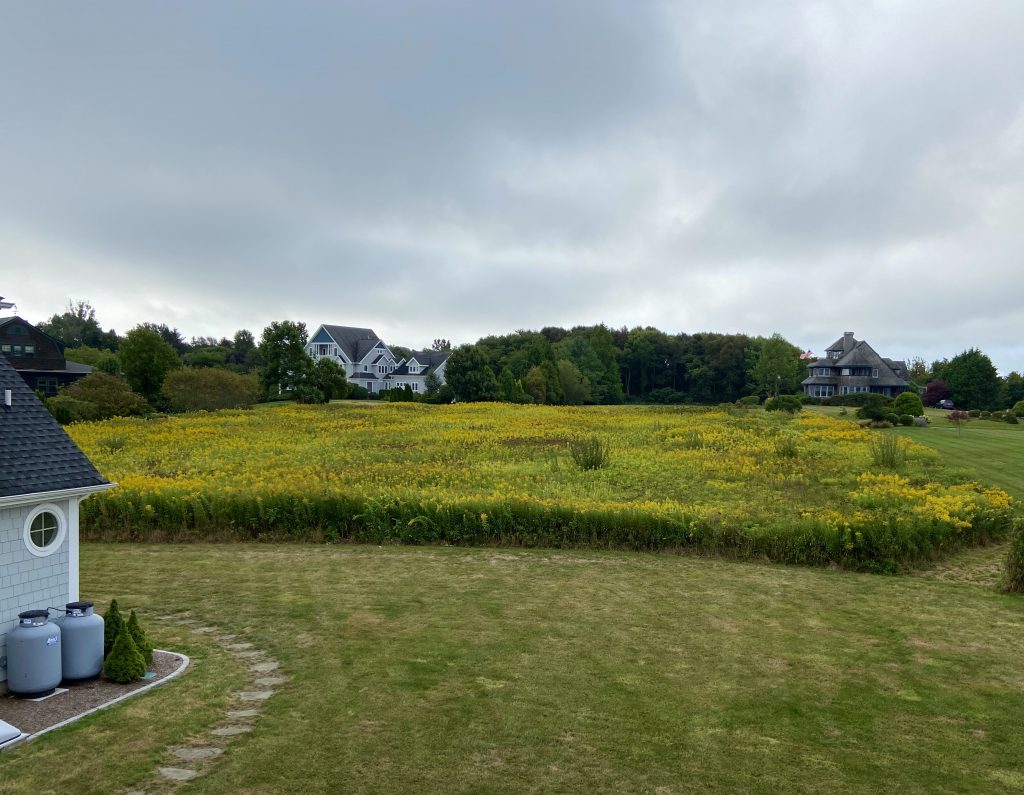
Fall is a time for migration in the North, as animals flee the bitter cold of winter in favor of warmer regions. If you’ve been outside in New England in the past few weeks, you’ve probably been in the presence of these migrants. Birds are some of the best known long-distance migrants, but plenty of insect pollinators embark on similarly stunning journeys each fall, in spite of their diminutive size. Some are inconspicuous and elusive, like the various species of hover fly whose migration through our region has only been recorded a few times in the past hundred years; others, like the monarch butterfly, are beloved signs of the closing of summer.
Each fall, millions of these large orange and black butterflies form a remarkable caravan, as monarchs from breeding grounds across a range that stretches as far north as Nova Scotia embark on the long flight to the overwintering grounds in central Mexico. These migratory monarchs need to reach dwindling undisturbed patches of oyamel fir forest, where they spend much of the cool winter perched in massive clumps on the trees, largely quiescent. There they wait for warmer temperatures that signal the arrival of Spring, when they can depart and gradually begin their multi-generational recolonization of the breeding range.
Surviving the 3000+ miles of flight and the subsequent months of cool winter in Mexico requires energy, and lots of it. The butterflies – weighing about a fifth of a penny – bulk up on nectar by gorging for hours on fall-blooming flowers. So efficient are their digestive systems that it’s thought that the sugars in the nectar can be converted into energy-rich fat stored in a special organ in a matter of minutes. Monarchs most likely need to more than double their regular fat stores during migration in order to survive the winter, meaning that stunningly, these butterflies actually gain weight during their multi-thousand-mile-journey.

You may have heard that monarch butterfly populations have suffered steep declines in recent years, with most estimates putting the losses in the Eastern population over 80%. A broad set of human actions have conspired against the monarchs, including deforestation in Mexico and agricultural herbicide use in the Midwest. Recently, ecologists have raised the specter of a third challenge: increased mortality during migration.
Migration is a dangerous undertaking, and biologists speculate that perhaps as many as 95% of monarchs attempting to migrate perish each year. As meadows and prairies have been converted to asphalt and crops, native grassland habitats that support large numbers of fall-blooming flowers are a dwindling commodity. Some ecologists posit that a lack of nectar along the migration route could be leading to starvation during the flight or in the quiescent overwintering period.
This is where we come in. Through planting gardens that can continue producing flowers all the way through October, we can provide valuable resources not just for monarchs but for all the other pollinators that are still flying. Surviving and thriving at this time of year in New England can be a tenuous proposition for animals that eat nectar and pollen: nighttime temperatures flirt with freezing and many of the flowering plants in our region have already gone to seed or begun senescing by September. In a summer with a drought like the one we’ve had in Massachusetts this year, wildflower outlooks can be even grimmer by the time October swings around.
But where there is a tenuous situation, there is also an opportunity for our interventions to make a bigger difference. Much of the land in New England would, given the chance, burst into late-fall bloom every year in a riot of goldenrods and asters, pumping out nectar and pollen through until frost. These native, pollinator-friendly species are conveniently often exceedingly drought-tolerant and some grow aggressively when given the chance, like the goldenrod species in the picture below:

Crucially, these patches can arise in the middle of neighborhoods on vacant lots or road verges, providing unexpected oases for fall-flying insects. Likewise, by carefully planning gardens that bloom continuously until the end of September, gardeners can provide nectar not only for migrating monarchs, but the hundreds of other pollinator species that require pollen during the fall.
Adding autumn-blooming flowers amounts to starting a food bank for pollinators like monarchs, and by planting easy-to-grow native perennials like goldenrods and asters, the food bank will return every year, essentially for free! Migration is hard enough without pesky human interference; let’s try and help these iconic butterflies along their way, if we can.

